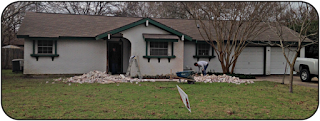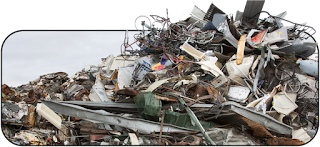 Try to think of depreciation on rental properties as an income stream instead of as your money going up in smoke.
Try to think of depreciation on rental properties as an income stream instead of as your money going up in smoke.
This post originally appeared on the Hermit Haus Redevelopment website on 2016-01-08.
This is the third of the articles I’m writing on the financial advantages of owning rental properties. A couple of recent posts have pointed out some of the hazards of owning rentals, and everything said in those posts is true. Owning rental properties is a business, and there are risks in any business. If you don’t manage your properties well, you could lose money. Let me restate that. If you don’t manage your properties well, you will lose money, sleep, and peace of mind—the last being the most important.
That said, the US tax code is written to encourage people to invest in real estate, from individuals who own only one home to investors who own many. It contains so many tax benefits for rental owners, you’d need to be a real estate tax specialist to understand all of them. And if you’re playing this game, you definitely need a good CPA and a good lawyer. I have them, and so does every professional investor I know. Further, I’m not going to pretend to be an expert in tax law or strategies. I’m writing these articles from my own experience, and your experience will definitely be different. You’ll do somethings better than I did, and you’ll do somethings worse. You’ll make or lose more money that I did, and I’ve done both.
Depreciation
So lets talk about depreciation. As an investor in rental properties, you are required to depreciate the improvements on your rental properties—just the buildings, not the land. For the sake of argument, let’s assume depreciation on the example house worked out to $5,000 per year. It doesn’t, but that’s an easy number to work with. At this rate, you will have written off your initial $25,000 investment in five years.
In the negative cash flow situation, there would be probably little or no impact to your annual taxes, but the depreciation and other loses would affect the bottom line when you sell. This minimal impact is because most of us can only use real estate losses to shelter real estate income, and conservative accountants will only allow you to carry forward the loss to shelter next year’s income, if any. The IRS publishes guidelines for being certified as a Real Estate Professional, which changes the rules substantially, but I’m not qualified to publish anything that might be considered tax advice; so I won’t. Talk to your CPA.
In the positive cash flow scenario, depreciation would more than offset the $4,800 dollars the rental put in your pocket. If you’re in the 40% tax bracket, that would be the equivalent of reducing your tax burden by $1,920—a return of almost 8% on your initial $25K investment.
The Downside to Depreciation
The downside to depreciation is that it reduces your basis in the property. Basis is basically what you paid for the property plus any improvements that are not deductible as expenses. When you sell a property, you subtract the basis from the sales price to calculate your profit on the property for tax purposes. When you sell the property for more than your basis, you have to recapture the amounts you depreciated as income on the sale. But that comes much, much later—if ever.
 My mom, a Realtor®, used to joke that cemetery plots were good investments. “People are just dying to get in there.”
Photo by:
My mom, a Realtor®, used to joke that cemetery plots were good investments. “People are just dying to get in there.”
Photo by:
If you leave the property to your heirs, their new basis is the value of the property at the time of inheritance; all of your deductions for depreciation don’t count after you die. If the property is worth $200,000 when you die, the new basis for your heirs is $200,000. That makes depreciate an almost infinite return on investment, but it doesn’t help you when you’re dead.
There are also tax advantages associated with equity growth, but that’s the subject of the another article in this series.
Are you starting to get excited about owning rental properties? Writing this series of articles has reinvigorated me, and helped reshape my investment strategy. As my friend and mentor Phill Grove says, “How many rent houses should you buy? All of them!” Just make sure you buy them right, and they’ll make money for you.
Posts in this series:
- Streams of Income from Rental Properties
- The Two Examples and Cash Flow
- Tax Reduction Through Depreciation
- Equity Growth











